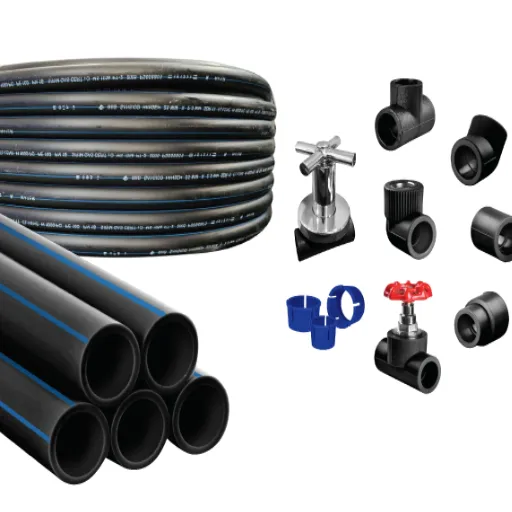HDPE socket fusion fittings are considered to be major and high-quality pipeline components in multiple industries and are renowned for their durability, reliability, and efficiency. The socket fusion process, a popular HDPE joining system, involves heating and melting pipe ends and fittings to make them join in a single piece, where no leakage can possibly occur. This blog aims to help you understand the socket fusion process, along with the technical aspects, benefits, and uses of socket fusion fittings. Since the usage of HDPE socket fusion fittings is something that will surely play into the effective working time and durability of your piping systems, any engineer, contractor, or industry professional will benefit from having an understanding of it.
Introduction to HDPE Socket Fusion Fittings
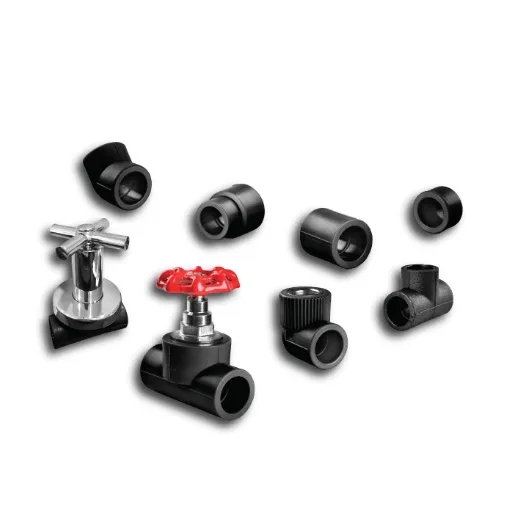
Definition of HDPE Socket Fusion Fittings
HDPE (High-Density Polyethylene) socket fusion fittings are dedicated components used to fuse HDPE pipes by applying heat and pressure to produce a homogeneous, leakproof joint. These fittings preserve the integrity of the piping systems by bonding permanently against corrosion, chemical attack, or environmental stresses in general.
The heat application is performed on both the outer surface of the pipe and the inner surface of the fitting by means of the socket fusion tool. Once heated sufficiently, they are brought into contact and pressed together under controlled pressure, welding the material together. This produces a strong joint where the strength is as strong as or stronger than the base material of the pipe itself, thus suited for any application where the system is either pressurized or not.
HDPE socket fusion fittings are widely used in water distribution, gas transportation, and industrial fluid handling for the durability and efficiency they offer to a respective application. They play an important and modern role due to their inability to withstand high temperatures and pressures that crack the fittings using this method, along with the long useful working life under the said conditions of piping.
Material Composition of HDPE
High-Density Polyethylene (HDPE) is a thermoplastic polymer made chiefly from long chains of ethylene monomers. The molecule has a low degree of branching, leading to tightly packed chains, conferring high density and strength in its structure. This configuration makes HDPE extremely tough and able to withstand much stress from the environment.
Ethylene is the principal hydrocarbon building block of HDPE and is derived from petrochemical sources like natural gas or crude oil. The ethylene monomers directly undergo polymerization by means of a catalyst to form polyethylene chains. The mechanism of polymerization is well-controlled to bring about its major properties, such as high tensile strength, great chemical stability, and resistance to absorbing moisture.
These HDPE materials may also have certain additives introduced to modify their performance or to provide an additional function. The presence of antioxidants is to prevent degradation during the processing stage; UV stabilizers provide greater resistance against sunlight; and pigments or colorants are for identification or aesthetic reasons. These are immensely small quantities of additives that go towards the HDPE in order to maintain certain core characteristics of this plastic, suitable for industrial and commercial applications.
How Socket Fusion Works
Socket fusion, beyond being one of the most dependable and widely used methods, is a thermoplastic pipe and fitting joining technique, especially for materials like HDPE. Using heat and pressure, it forms a homogeneous joint very much like the pipe itself, ensuring ultimate long-life durability and efflux leakage applications with systems such as water distribution or gas conveyance.
Step-by-Step Process:
- Set-up heating of the pipe outer surface and the inner surface of the fitting using a socket-fusion tool
- The tool contains male and female heating elements that warm the surfaces uniformly to the required fusion temperature
- When the temperature has been attained, the pipe and fitting are swiftly removed from the heater and pushed together
- The molten surfaces fuse as the material cools, forming a single joint within which both materials are integrated
Timing and working conditions—especially heating and joining—should be very precise since any deviances impair bond strength. Another major advantage of socket fusion is its simplicity and portability. It needs so few things that it may be carried out either at the site or in the factory. Moreover, no other materials, such as adhesives or mechanical fasteners, are required, eliminating possible failure points. These processes tend to be favored in systems that require a high degree of integrity and are subjected to pressures or other environmental stresses.
Uses of HDPE Socket Fusion Fittings Across Industries
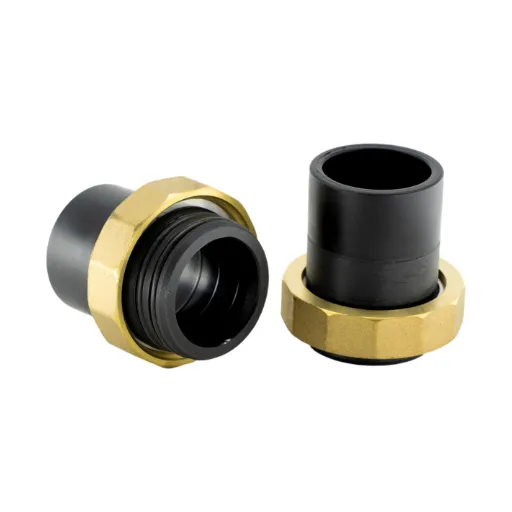
Applications in Plumbing
Being used in curative plumbing because of their mechanical property, leakage, and resistance to corrosion, a wide range of high applications are given in the plumbing sector.
🏠 Residential Water Supply Systems
Areas of potable water conveyance for domestic water supply for HDPE socket fusion fittings. The sterile joining method ensures that water does not get contaminated while satisfying hygienic safety requirements and standards.
🚰 Underground Utility Lines
This plumbing connection fitting is widely used in the underground systems, resistant to chemical action from the soil and other environmental stresses. Its flexibility helps to prevent fractures caused by ground movement.
🏭 Industrial Plumbing Systems
Industrial installations require the plumbing system to withstand the harsh environment of high pressure and corrosive substances. HDPE socket fusion fittings are chemically resistant and mechanically strong for this application.
💧 Irrigation Systems
HDPE fittings are perfectly set to take up irrigation systems of the present day to provide a proper outlet or distribution of water from various sources with minimal leakage. Due to their adaptability even through varying terrains, these are used for agricultural as well as landscaping irrigation.
🌡️ Hot and Cold Water Distribution
Their thermal resistance and their capability to handle pressure make HDPE socket fusion fittings suitable for distributing both hot and cold water to provide maximum performance in domestic and commercial applications.
Structures like these prove the great versatility HDPE socket fusion fittings have to offer in various plumbing systems, thus being considered the choice of the industry.
Utilization in Agriculture
HDPE socket fusion fittings are widely established in the agriculture sector because of their durability, chemical resistance, and ability to resist harsh environmental conditions. The following five applications are considered important applications for HDPE socket fusion fittings in agriculture:
- 🌱 Irrigation: HDPE socket fusion fittings find their uses in modern irrigation systems, including drip irrigation and sprinkler irrigation. Since they create leak-proof joints, they favor the optimal distribution of water and thereby reduce waste while improving water efficiency.
- 🧪 Fertilizer Distribution: These connectors are used in the distribution of the liquid fertilizer. Their chemical resistance promotes lasting performance against exposure to very acidic or alkaline substances.
- 🐟 Aquatic and Fish Farming: HDPE fittings are water-carrying solutions for aquaculture. They also fit well with fish farms in transporting fresh or saltwater without any form of degradation.
- 🚰 Drainage: Drainage for agriculture must be effective to preclude waterlogging and soil erosion. Because of their strength and long life, HDPE socket fusion fittings are often used in underground drainage networks.
- 🏠 Greenhouse Water Management: HDPE fittings form the backbone of water management in greenhouse environments. They power automated systems for watering plants, thus ensuring precision and the reduction of wastage of resources.
These examples indicate the significance of HDPE socket fusion fittings in enhancing agricultural productivity and sustainability. The fact that they yield robust results in harsh environments helps keep them as a preferred option among agricultural engineers and farmers alike.
Importance in Gas Distribution
Storage of efficient high requirements and secure gas installation systems calls for the best HDPE socket fusion fittings made from an HDPE compound. This unique trait is what makes them ideal for installations that last a long time in this field. The following are five reasons that make HDPE socket fusion fittings a must in gas-distribution work:
Key Advantages in Gas Distribution
💪 High Strength and Durability
HDPE socket fusion fittings resist abrasion and cracking under higher pressures and harsher environmental situations. This makes these fittings highly durable; installation of the piping becomes less frequent, minimizing interruptions in operations.
🔒 Leak-Proof Connections
The fusion process assembles joints that are monolithic and hermetically sealed. This inherently eliminates the possibility of any gas leak. From safety considerations, this remains an important factor in gas transmission and distribution systems.
🛡️ Corrosion-Resistant
Unlike metallic alternatives, HDPE fittings offer resistance to corrosion prompted by chemicals or environmental agencies. Consequently, over extended periods, the gas pipelines retain their structural integrity without the application of protective coatings or maintenance.
🌊 Design Flexibility
Being flexible in nature, HDPE fittings can accommodate a variety of terrains and ground movements without being damaged. This character makes it suitable for installation in areas possessing unstable soils and seismic activities.
💰 Economical
With less cost in installation and barely any in maintenance, HDPE fittings stand as an economic solution for gas pipeline infrastructure. The weight of the fittings also contributes to the reduction of their transport and installation costs as compared with traditional counterparts.
These features together make HDPE socket fusion fittings a secure option for gas distribution networks, ensuring an efficient, safe, and cost-saving operation of the system.
The Socket Fusion Process Explained
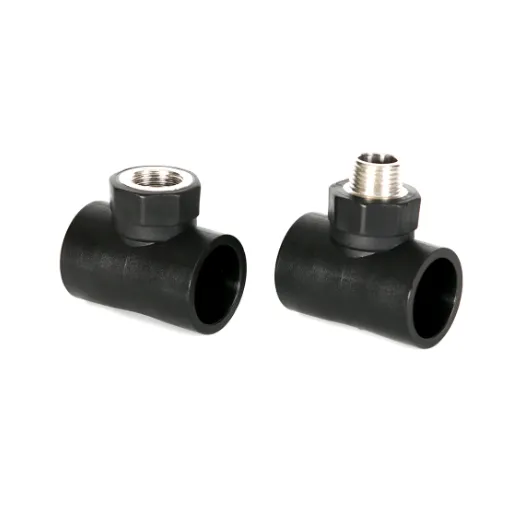
Tools Required for Socket Fusion
The socket fusion process requires special socket fusion equipment to accomplish the accurate and secure formation of joints between HDPE components. Major tools needed are:
| Tool | Description |
|---|---|
| Socket Fusion Welding Machine | This tool accurately heats and aligns the pipe and fitting so that proper melting and fusion occur. Modern machines come with temperature controls for setting the specified temperatures for HDPE materials. |
| Heating Elements and Sockets | These are usually non-stick-coated components to permit convenient heating of internal surfaces of fittings and external surfaces of pipes, respectively. These elements are kept standardized so that they remain compatible with different pipe sizes. |
| Pipe Cutters | There must be clean and burr-free pipe ends to ensure a good bond. Premium-quality pipe cutters are manufactured so that they will give a clean cut without deforming the pipe. |
| Alignment Clamps | These clamps hold the pipe and fitting together during the fusion process, ensuring they are aligned correctly and remain stationary until the joint cools and solidifies. |
| Deburring and Chamfering Tools | These are used to deburr and chamfer the pipe, eliminating sharp edges and creating a chamfer that facilitates the insertion of the pipe into the socket while helping to avert any contamination. |
| Temperature Calibration Tools | Even heat must be guaranteed for honest results. Calibration tools prove that the heating elements operate inside the prescribed temperature ranges assigned to various HDPE grades. |
| Safety Equipment (PPE) | Arriving at any potential hazard through the fusion process is an essential safety duty. Available gear consists of heat-resistant gloves, safety glasses, and protective clothing for your protection against potential thermal hazards. |
By means of these tools combined with following the standard operation procedure, the socket fusion process ensures reliable leak-tight joints essential to maintain system integrity.
Preparation Steps for Socket Fusion
Step-by-Step Preparation Process
-
1
Material Inspection and Verification
Consider first-faced inspection of the pipes and fittings for any manufacturing defects, surface contaminants, or any visible damage. Make sure that the components satisfy all the specifications for the intended use, including dimensional tolerances and pressure ratings.
-
2
Cleaning of Surfaces
Cleaning the joining surfaces is aseptic to achieve a good fusion. From a clean, lint-free cloth to an isopropyl alcohol solution, check to see the removal of any grime, grease, or any residues. Any contaminant found on the pipe or fitting can mar welding quality and jeopardize joint integrity.
-
3
Cutting and Facing
The pipe should be cut squarely with a pipe cutter or saw. Square cuts will result in better alignment accuracy during the fusion process. Facing of the pipe edge should be done with a facing tool to eliminate any irregularities or sharp edges on the thicker pipes.
-
4
Marking Depth and Alignment
Measure and mark the insertion depth on the pipe to ensure the correct penetration into the socket fitting. Also, you may draw alignment marks to ensure proper orientation between the pipe and fitting during the heating and joining stages.
-
5
Pre-heating of Socket Fusion Tool
Check that the socket fusion heating tool is set to a temperature range suitable for the grade of HDPE being used (usually between 490° and 510°F for common HDPE work). Allow the tool to reach its operating temperature and stabilize at it to get a consistent application of heat.
-
6
Clamp Configuration and Placement
Clamp the pipe and the fitting if so required by your system’s SOP. Proper clamping prevents unintentional movement and assures consistent alignment through the heating and fusion processes.
If processes are followed properly, the socket fusion procedure creates conditions for the strongest possible bond, ensuring that any weakened joint condition will be avoided and that the whole system remains capable of performing for an extended period.
Safety Precautions During the Fusion Process
⚠️ Critical Safety Requirements
During the socket fusion process, safety must be ensured for the well-being of the operator and for the quality of the final assembly. Operators should don proper personal protective equipment, such as heat-resistant gloves, safety goggles, and fire-retardant clothing in order to limit exposure to high-temperature surfaces and splatter from molten plastic.
🌬️ Ventilation Requirements
Work areas must be adequately ventilated to reduce the consequences of being exposed to fumes during heating, especially when working with thermoplastics that release volatile organic compounds (VOCs).
🔥 Fire Safety
Remove any potential flammable substance from the vicinity of the working area as heating tools are hot, normally ranging in temperature from about 450°F to 500°F (232°C to 260°C).
⚡ Electrical Safety
Electric hazards are foregone; ensure the fusing equipment is adequately grounded and without damage. Regular inspections of fusors and maintenance are recommended: defects such as worn-out heater plates or frayed cords will compromise both safety and functionality.
Finally, operators must keep within the established and standardized heating time and joint pressure recognized by tests to prevent thermal degradation of the plastics or uneven bonding. Strict observation of these safety protocols ensures results in the protection of the operator as well as consistent quality and performance of pipe joints over time.
Maintenance Tips for HDPE Socket Fusion Fittings
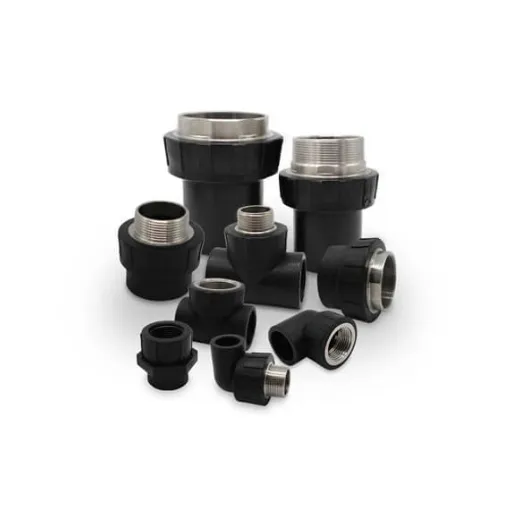
Cleaning and Inspection Guidelines
Proper cleaning and inspection ensure HDPE socket fusion fittings maintain their structural integrity and performance over time. All parts, including the pipe end and socket surface, should be cleaned correctly before fusion to remove any contaminants, including dirt, oil, or moisture. Usually, an industrial solvent or alcohol wipes are used, provided the cleaning agent is non-abrasive and non-residual, as this residue could interfere with the fusion processes.
🔍 Inspection Checklist
- Examine fitting and pipe ends for cracks, deformities, or discoloration due to overheating
- Ensure surfaces are smooth, as irregularities would hamper fusion and joint strength
- Inspect heating plates for wear and damage that could imprint on HDPE material
- Check for signs of degradation in equipment or materials
Thus, to obtain an extra margin of reliability, implement a regular maintenance program including visual checks and measurement of critical components so as to identify any indication of degradation of equipment or materials in advance, thereby avoiding possible joint failure in actual operation. Following such cleaning and inspection routines will guarantee maximum joint performance and help prevent costly repairs and downtime of the system.
Proper Storage Techniques
The proper storage of critical materials and equipment, time being properly oriented toward inception and operation, holds paramount importance. Storage conditions must be pursuant to particular environmental requirements depending upon the constituents and operational application of the components in question.
| Material Type | Storage Requirements | Protective Measures |
|---|---|---|
| Polymers/Elastomers | Cool, dry areas with controlled humidity | Prevent UV radiation and heat exposure |
| Metal Components | Dry, clean environment | Rust-preventive coatings |
| Electronic Components | Temperature and humidity controlled | Anti-static bags and protective coverings |
Likewise, items should be arranged and labeled systematically for quick retrieval while preventive handling is considered. Real-time inventory tracking systems can be introduced to enhance storage efficiency by reducing excess stock and ensuring that aging stock is cycled hurriedly before it becomes obsolete. Adjustments should be made to storage protocols to keep them in line with new developments in research and best practices. Data-driven and systematic storage approaches will minimize the loss of materials and ensure the reliability of critical systems, which in turn reduces downtime costs.
Ensuring Long-Term Performance and Reliability
Such predictive maintenance model-based data analytics and real-time monitoring systems ensure long-term performance and reliability. On the other hand, IoT sensors and machine learning algorithms detect any initiation of wear, stress, failure, or any potential failure in critical components. These forewarning measures minimize downtimes for operational systems and ensure that resources are scheduled to handle an issue only when it is required.
🔮 Advanced Monitoring Techniques
📊 Vibration Analysis
Pinpoint mechanical inefficiencies and potential failure points through continuous vibration monitoring
🌡️ Thermal Imaging
Detect temperature anomalies and thermal stress patterns in real-time
🖥️ Software Diagnostics
Analyze digital process stability and system performance metrics
Integration of performance data based on historical data into predictive models can aid in the disruption forecast accuracy. A continuous feedback loop from these systems allows for iterative evaluation and adjustment, resulting in resiliency in the long run. Another element of reliability builds on the rigorous lifecycle management of equipment and materials. Using state-of-the-art materials, with validated durability standards, based on condition thresholds, reduces the chances of unexpected fatigue or corrosion. Advanced technology, strong protocols, and one of the finest interpretations of data orchestrate into a balance to ensure precision and reliability are maintained in sustainable operations.
Choosing the Right HDPE Socket Fusion Fittings for Your Project
Factors to Consider: Pipe Size and Operating Pressure
HDPE socket fusion fittings require attention to pipe size and pressure requirements before being selected for any project to guarantee system efficiency and safety. The pipe size directly affects the compatibility of the fittings since the mismatch of scales may aggravate improper connection; thus, there may arise possibilities of leakage or failure. Standard diameters would be assigned for various applications, very low diameters such as 20 mm for smaller applications, to large diameters more than 630 mm for large-scale installations that need an arduous measuring process during selection.
Pressure Classification System
| Pressure Class | Maximum Operating Pressure | Typical Applications |
|---|---|---|
| PN6 | 6 bar at 20°C | Low-pressure water supply |
| PN10 | 10 bar at 20°C | Standard water distribution |
| PN16 | 16 bar at 20°C | High-pressure applications |
Another important factor to consider is the operating pressure, as HDPE materials are assigned pressure classes such as PN6, PN10, and PN16, etc., by which they are identified. These classes indicate the maximum operating pressures that the materials can either sustain or withstand at a standard temperature of 20°C. Projects that involve higher velocities of fluid flow, higher temperatures, or pressurized liquids should take derating coefficients into consideration to ensure the long-term operational performance of the fittings. By following these guidelines, these fittings will be able to withstand operational stress while maintaining the structural integrity of the system over time.
By combining the accurate pipe dimensions with a thorough analysis of pressure, and linking these with manufacturers’ specifications as well as performance ratings, an optimized system design can be realized—made to fit the unique constraints of the project.
Environmental Conditions and Their Impact
Environmental conditions play a critical role in the performance, durability, and safety of piping systems and related components. Understanding the nature of various environmental factors helps to ensure better material selection and design optimizations for an operational environment, thereby reducing risks and increasing system life. Some key environmental conditions and their specific impacts are listed below:
🌡️ Temperature Variations
Extreme temperature fluctuations, such as those found in high-heat or freezing environments, cause the thermal expansion and contraction of pipe materials. After prolonged exposure, materials might begin to fatigue, crack, or warp. The environmental temperatures must follow manufacturer ratings to maintain system integrity. For the sake of example, PVC pipes are generally rated for usage at temperatures below 140°F, whereas stainless steel pipes are used for temperatures exceeding 800°F.
⚗️ Corrosive Environments
The presence of corrosive substances or saline atmospheres—chemical plants or coastal regions—stimulates material degradation. For example, carbon steel tends to rust from humidity, whereas high-grade alloys such as stainless steel 316 offer better corrosion resistance. Corrosion-resistant material selection and application of protective coatings should be considered in such cases.
☀️ UV Radiation
Prolonged UV exposure leads to the degradation of non-metallic substances, such as plastics and rubbers. In areas exposed to the sun, degradation and loss of mechanical properties due to brittleness and discoloration are inevitable. UV-stabilized compounds or protective covering will protect against this kind of degradation.
🧪 Chemical Exposure
Aggressive chemicals, such as acids, solvents, or hydrocarbons, may be released or act directly on pipes, causing limited structural deterioration in them. As an example, polyethylene piping reacts badly with strong oxidizing agents but seems okay when used with mild solutions. In order to avoid degradation of materials, a chemical compatibility chart should be used when selecting the materials.
📳 Vibration and Mechanical Stress
Rare are the cases when vibration caused by external machinery or turbulent flow within the pipeline creates stress to cause fractures on the line, loosen joints, or just wear out materials by fatigue. A system working in a high-vibration environment might resort to flexible joints or supports that work to dampen vibrations and distribute stresses on those more affected by wear.
If these environmental conditions are considered during the design and material selection, engineers can mold the system so that it attains its optimal performance, with minimum expenditures in its maintenance, and allows its safe exploitation in all working scenarios considered.
Making Informed Decisions for Your Needs
Customized solutions for engineering design and material selection very much consider the specific application requirements. I start by looking at the factors influencing the system from the environment, operational loads, or potential stress points, such as temperature, exposure to corrosive substances, and mechanical pressures. All these variables affect material suitability and the life span of the system.
💡 Decision-Making Framework
- 1. Environmental Assessment: Analyze temperature, corrosive substances, and mechanical pressures
- 2. Long-term Performance: Balance initial costs with maintenance and operational lifetime
- 3. Compliance Check: Ensure alignment with safety standards and budgetary constraints
- 4. Risk Mitigation: Minimize downtime and associated costs through reliable design
Also, I consider aspects of long-term use and maintenance to maintain the balance between performance and cost. The materials and design are selected considering their performance during the initial phase of operation and their resilience when conditions would remain unfavorable for very long periods of anticipated stress. For example, by having a few reinforced parts or possibly a state-of-the-art coating, one might increase the life of the repaired items, thereby decreasing their downtime and associated product and labor costs during the lifetime of the system.
Ultimately, I strive to align solutions with operational requirements, safety standards, and budgetary constraints. Utilizing a disciplined decision-making process allows me to provide recommendations considered reliable and enhance efficiency, retain compliance, and reduce risk in numerous applications. Such a thorough analysis ensures that your final design meets your needs both functionally and economically.
Frequently Asked Questions (FAQ)
Q: What are HDPE socket fusion fittings?
A: HDPE socket fusion fittings are special components made of high-density polyethylene (HDPE) that are used for different applications to connect pipes. The socket fusion technique involves allowing both the fitting and the pipe ends to be heated and slowly joined together to give a highly resistant and leak-proof joint.
Q: Compared with butt fusion fittings, how do HDPE socket fusion fittings fare?
A: HDPE socket fusion and butt fusion fittings are used to connect HDPE pipes—the major difference that distinguishes them is that socket fusion is usually joining pipe to fitting through a socket connection, whereas butt fusion connects two pipe ends directly. Socket fusion is used mostly for small-diameter pipes and fittings, whereas butt fusion is preferred for large-sized applications.
Q: What kinds of HDPE socket fusion fittings are there?
A: HDPE socket fusion fittings are available in various categories, such as tees, elbows, reducers, and caps. This allows for a variety of possibilities in configurations for piping systems and thereby accommodates a whole lot of industrial-oriented uses such as water supply, sewage, and industrial processes.
Q: Are there any newer-type products in the area of socket fusion fittings?
A: Yes, the market for HDPE socket fusion fittings is an ever-evolving one with new products being cranked out regularly. Manufacturers are coming up with new fittings that can offer superior performance, longer life, and greater compatibility with different pipe sizes and applications.
Q: What are the prices for HDPE socket fusion fittings?
A: The price of HDPE socket fusion fittings varies widely with size, type, and manufacturer. In general, the smaller ones, like tees or elbow sleeves, may be cheaper, while the bigger or more complex ones are more expensive. It is best to shop around and compare prices from several suppliers to secure the best bargains.
Q: Can HDPE socket fusion fittings be made to work with valves?
A: Yes, HDPE socket fusion-type fittings can be used together with valves to build a complete piping system. Valves may be installed in the system to regulate the flow of liquids or gases, which are then socket-fused with the HDPE pipes and fittings to secure them.
Q: What are the advantages of HDPE socket fusion fittings?
A: Due to corrosion resistance, lightweight properties, and flexibility, HDPE Socket Fusion Fittings find utility in various fields. Further, in the socket fusion process, an excellent, strong joint is formed, which reduces potential leaks.
Q: How do you properly install HDPE socket fusion fittings?
A: Installation of proper HDPE socket fusion fittings includes all processes of joining—that is, preparing the joining surfaces of the pipe and fitting, heating these surfaces to the specified temperature, and then joining them together under sufficient pressure. It is crucial to follow manufacturers’ instructions and prevailing standards to ensure successful fusion.
Q: Do HDPE socket fusion fittings require maintenance?
A: HDPE fittings made for socket fusion require very little maintenance as they are considered to be highly durable. Still, it is paramount to check the fittings and, of course, the piping system from time to time for signs of wear or damage. Should damage be detected, it must be immediately repaired or replaced to protect the integrity of the system.
References
📚 Educational Resources and Standards
- Poly Pipe Heat Fusion – Matech.edu
The textbook discusses socket fusion welding techniques for creating plastic piping systems, including some manual and hydraulic applications.
- Polyfusion Training – CentralTech.edu
The website provides details on the pipe fusion process, including combinations of heat and pressure to join thermoplastic pipes like HDPE.
- Chapter 6: Polyethylene Joining Procedures – AppState.edu
The document contains specifications for socket fusion tools and their use in joining PE pipes and fittings.
- Design Standard-Underground Piping Installations – TAMU.edu
The design standard describes the requirements for a socket fitting, including ASTM standards for HDPE piping.
- AWWA C906-15 McElroy – Imperial.edu
Talks about socket fusion tools for smaller diameter pipes and fittings, and their ability to reliably join the HDPE materials.
Ready to Implement HDPE Socket Fusion Solutions?
With proper understanding of materials, processes, and maintenance requirements, HDPE socket fusion fittings provide reliable, long-lasting solutions for diverse industrial applications.



